Introduction

Alan Robertson OBE FRS FRSE (1) (21 February 1920 – 25 April 1989) was an English population geneticist who grew up in Halewood and was educated at the local church primary school. Originally a chemist, he was recruited after the Second World War to work on animal genetics on behalf of the British government, and continued in this sphere until his retirement in 1985. He was a major influence in the widespread adoption of artificial insemination of cattle.(2)
In addition to his work on agricultural genetics, Robertson undertook extensive studies of other branches of genetics, developing an influential secondary theorem of natural selection. He acquired an international reputation, receiving state and academic honours from Europe, America and Asia.(3)
Education and early life
His parents, who were both telegraphists, met working for the GPO in Liverpool, and married in 1913 at St Nicholas Church in Halewood. His father, John Mouat Robertson, was from Toxteth, and his mother, Annie Grace, was the daughter of local farmer William Grace of Okill's Farm, off Church Road. (Annie was the younger sister of the University of Cambridge mathematician John Hilton Grace; return to the People of Halewood page for his biography).
In early 1915 a daughter was born, Jean Grace Robertson, but she tragically died aged three in 1919 and was laid to rest in St Nicholas Churchyard.

Marriage of John Robertson and Annie Grace, St Nicholas 1913

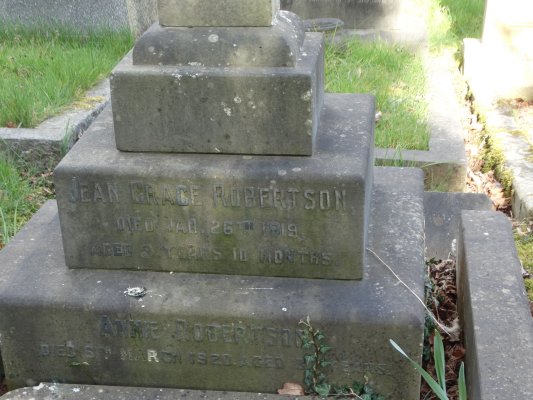 Memorial for Annie Grace Robertson and her daughter Jean, St Nicholas Churchyard ( Photo: Weston Girl)
Memorial for Annie Grace Robertson and her daughter Jean, St Nicholas Churchyard ( Photo: Weston Girl)
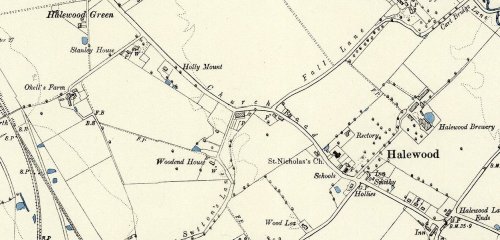 Okell's Farm (left) in Halewood Village (1894)
Okell's Farm (left) in Halewood Village (1894)
 Census 1901: Family of William Grace, Okell's Farm, Halewood Village
Census 1901: Family of William Grace, Okell's Farm, Halewood Village
Annie already working as a telegraphist aged 18
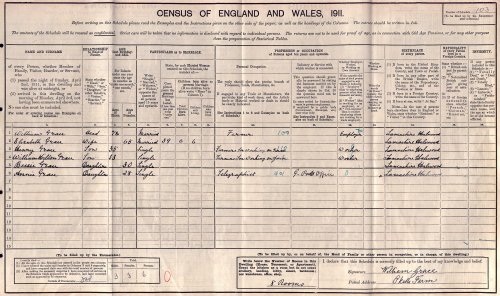 Census 1911: Family of William Grace, Okell's Farm, Halewood Village
Census 1911: Family of William Grace, Okell's Farm, Halewood Village
Their son Alan Robertson was born on 21 February 1920 in Preston, Lancashire, where the couple may have moved to for a fresh start, his father still working as a telegraphist. However, it wasn't to be. Annie Robertson died within days of Alan's birth on 6 March, at Grove House Nursing Home in Preston, and was brought home to Halewood to be interred in St Nicholas on 10 March. John Robertson returned to Liverpool, and continued in his occupation, living in the Wavertree/Childwall area until his passing 30 April 1966 in the Rathbone Hospital, Old Swan, due to bronchial pneumonia.
John was unable to cope with an infant while working full time, and his young son was brought up by his aunt Bessie Grace at Okell's Farm. Alan was educated at Halewood village school, from where he won a scholarship to the Liverpool Institute High School in 1930. He distinguished himself there in languages and in science under the tutelage of the chemistry master L. A. Naylor.
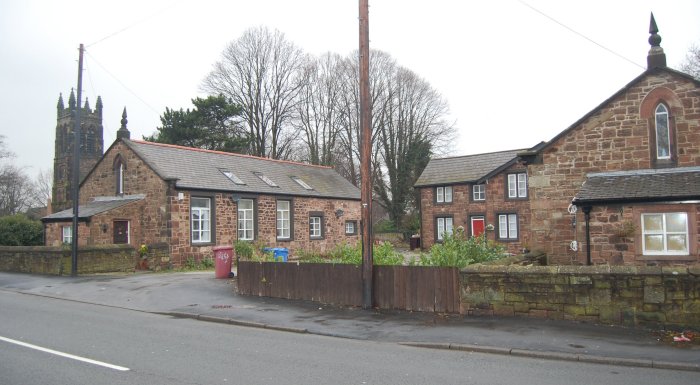
St Nicholas Church School where Alan Robertson attended in the 1920s
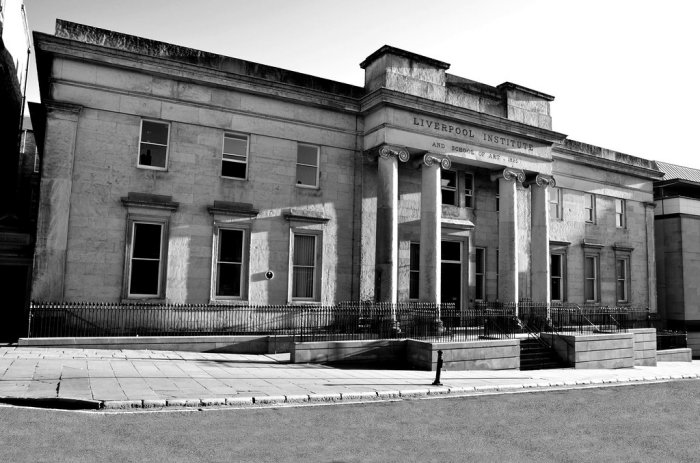
Liverpool Institute for Boys where Alan Robertson attended in the 1930s
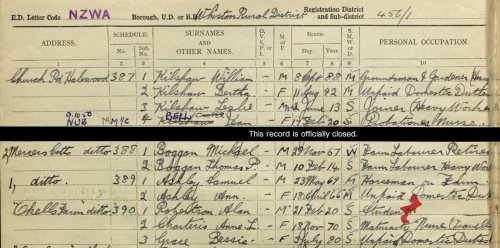
1939 Census - Okell's Farm
Alan is recorded as a 20 year old student at home with Aunt Bessie, probably on an Easter break from University,
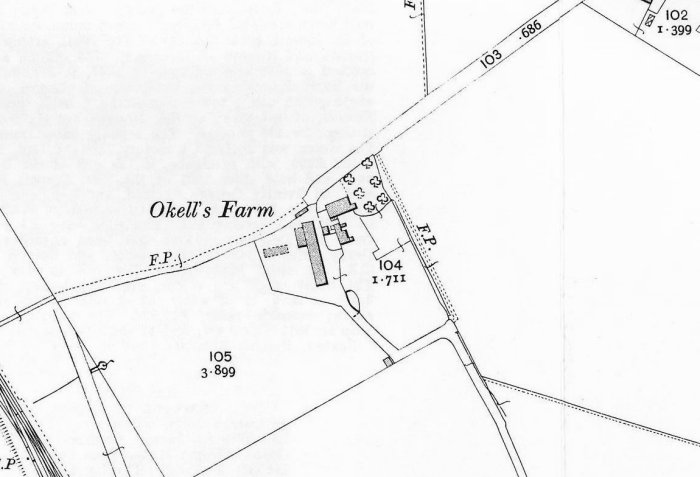
1895 - Okell's Farm
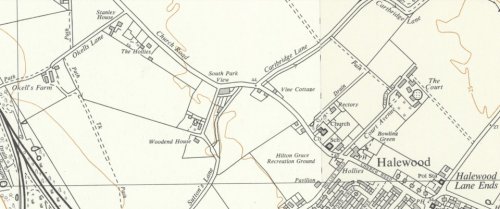
1950's - Okell's Farm
In 1938 he won a scholarship to Caius College, Cambridge to read chemistry. He graduated in 1941 with an upper second class degree, and became a research student in the Department of Colloidal Science at Cambridge.
During the Second World War, Robertson served in the Operational Research Section of Coastal Command. The head of the unit was Conrad Hal Waddington, who invited Robertson after the war to join him in a new research body, the National Animal Breeding and Genetics Research Organisation (NABGRO). In an obituary study of Robertson, William G. Hill wrote, "At this stage Alan could have had no more than a passing acquaintance with genetics, but he did have a firm understanding of practical farming...Waddington wanted to apply operational research methods to animal breeding and recognized Alan's mathematical talents and ability in operational research."(4)
Research and career
After spending nine months in the US receiving training in genetics and animal breeding with Sewall Wright and Jay Laurence Lush, Robertson took up his work at NABGRO, based in Edinburgh. The organisation was split into two parts, and Robertson became a member of the Unit of Animal Genetics, where he spent the rest of his career. At first, he worked on improving dairy cattle using mathematical and statistical methods to devise the most effective breeding programmes. Away from the everyday work of the Unit, Robertson also worked on evolutionary biology, studying how variation is maintained in populations, and particularly the roles of mutation and of stabilising selection. Hill wrote that Robertson made "original contributions to the theory of genetic change in small populations and introduced a theory of limits to artificial selection...a combination of mathematical insight, quantitative genetic principles, and practical context, of which only he was capable."(5)
Robertson continued to work on dairy-related research and wider theoretical studies. He did much to introduce widespread use of artificial insemination in dairy cattle,and worked for many years on estimating genetic effects that influence quantitative traits, and he developed what became known as the "secondary theorem of natural selection." He held the post of Deputy chief scientific officer of his Unit, and kept away from administrative duties. Hill recalled that Robertson "remained informal, approachable, and 'Alan' to all. His influence was through his papers, as a scientific referee, by personal contact (particularly in his famous morning coffee group), as a conference speaker and organizer, and as an example of efficient (if not organized) hard work." His doctoral students included William G. Hill, Trudy Mackay and Paul M. Sharp. (4 & 5)
Awards and honours
Robertson was elected a Fellow of the Royal Society (FRS) in 1964. Two years later, he was elected a Fellow of the Royal Society of Edinburgh (FRSE). He was appointed Honorary Professor of Edinburgh University (1967), and received honorary degrees and memberships of the United States National Academy of Sciences (1979), the University of Hohenheim (1968), the Agricultural University of Norway (1984), the Danish Agricultural University (1986), the University of Liège (1986), and the Genetics Society of Japan. He was appointed Order of the British Empire in 1965, and received the Gold Medal of the Royal Agricultural Society (1958) and the Order of Isabel la Católica (1974).(4 & 5)
The Alan Robertson Chair of Genetics at the University of Edinburgh is named in his honour.(6)
Personal life
In January 1947, Robertson married Margaret Bernheim, a NABGRO colleague, with whom he had two sons and a daughter. He was a member of the Farmers Club. Robertson retired in 1985, and died in Edinburgh in 1989, aged sixty-nine.
[On the death of his uncle William Hilton 'Billy' Grace on 12 August 1954, Alan, together with Billy's sister Bessie, was the main beneficiary in his will, which was worth £1.1million, part of which was Court Farm, Halewood. Contrary to reports elsewhere, he never lived at the Court, as his life by then was in Edinburgh, and his home base in Halewood had been Okell's Farm with Bessie. However, his Aunt Bessie moved to Court Farm in 1966, as the Okells estate was earmarked for housing during the post-war development. Bessie later moved into the adjacent 12 Court Avenue (the renamed Brewery Lane), where she lived until her death on 8 September 1975. She was the last of the Grace family in Halewood].
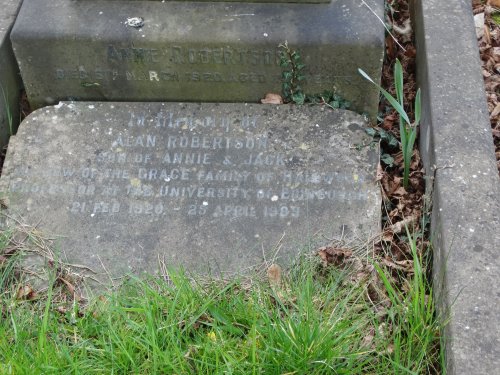
Memorial for Alan Robertson, St Nicholas Churchyard ( Photo: Weston Girl)
Footnotes
1. Hill, William George, 'Alan Robertson, 21 February 1920 – 25 April 1989', Biographical Memoirs of Fellows of the Royal Society. Royal Society, vol 36, pp.465–88 (1990).
2. MacKay, T. F. 'Alan Robertson (1920–1989)', Genetics. vol 125 (1), pp. 1–7. (1990).
3. University of Guelph Archives, 'Alan Robertson (1920–1989)', (2012).
4. Anon, 'Robertson, Alan', Who's Who. ukwhoswho.com (online Oxford University Press ed.)(2007)
5. Anon, 'Robertson, Alan', The Oxford Dictionary of National Biography, Oxford DNB online ed., Oxford University Press. (2004).
6. Sharp, Professor Paul M.,FRS, FRSE, MRIA Alan Robertson Chair of Genetics, University of Edinburgh Archives (2016).
www.roydenhistory.co.uk
Visit the Royden History Index Page listing web sites designed and maintained by Mike Royden
No pages may be reproduced without permission
copyright Mike Royden
All rights reserved
|

